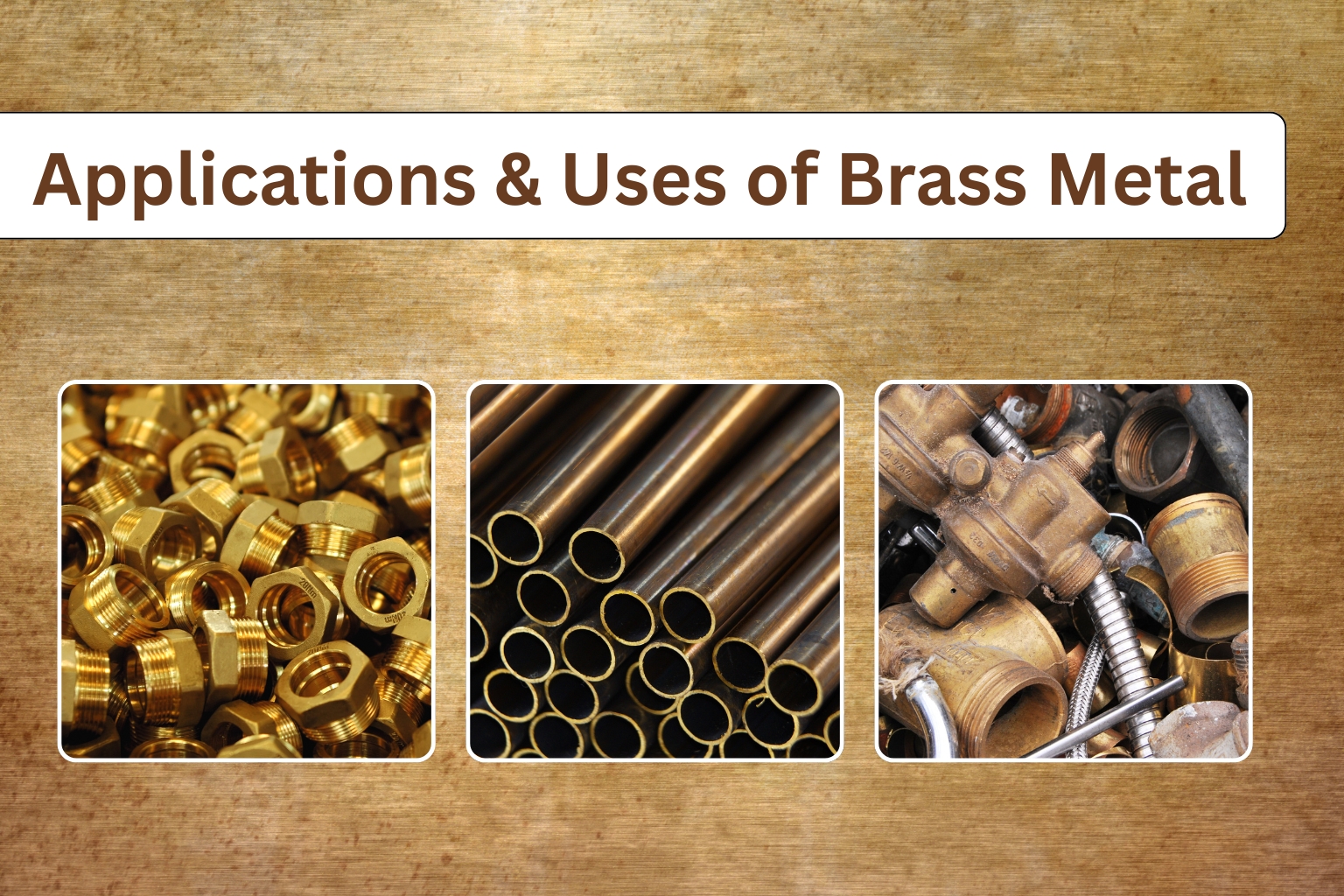Applications & Uses of Brass Metal: Modern, Unique & Sustainable
Table of Contents
What is Brass Metal Made Of?
Brass is an alloy of copper (67%) and zinc (33%). Lead, phosphorus, aluminum, manganese, and silicon metal are added to enhance the properties of brass. Brass is similar to bronze; it is a copper alloy that contains tin instead of zinc. Brass is more malleable than bronze or zinc. The best feature that brass contains is its gold-like appearance. This makes it popular not only for practical applications but also for decorative purposes. Brass is also known for being relatively easy to shape and work with, as it’s more malleable than many other metals. Copper and zinc alloys are used together because they form a durable and aesthetically pleasing material.

Unique and Modern Uses of Brass Metal
Most people think of brass; they picture doorknobs, musical instruments, or plumbing fixtures. Brass has made its way into modern industries and innovative technologies in ways that might surprise you.
Sustainable Architecture and Green Building
As sustainability becomes a priority in construction, architects and designers are turning to brass not just for its aesthetic appeal, but also for its natural antimicrobial properties and recyclability.
- Brass cladding is used on building facades to create striking, golden surfaces that age beautifully, rather than deteriorating over time.
- Interior designers specify brass for areas like door handles and railings because it naturally resists bacterial growth, reducing the spread of germs in public spaces.
3D Printing and Rapid Prototyping
Changing a digital design into a physical design layer-by-layer is called 3D printing. You may be surprised to learn that brass is now a viable material option for metal 3D printing. Industrial designers use brass printing for small, detailed parts where traditional machining would be too costly or slow. The 3D printing process is faster and more affordable than ever. With the help of rapid prototyping, a designer can:
- Create multiple design versions in a day
- Test functionality and form quickly
- Spot and fix design flaws early
- Save on production costs
High-End Automotive Interiors
A high-end automotive interior is not just about the look; it also relates to comfort and gives the best driving experience. Modern technology vehicles cover almost all aspects of comfort and quality with the use of brass metal.
- Custom gear shift knobs and dashboard accents use brass for its warm tone and elegant shine.
- Luxury interiors are built for long journeys and total relaxation.
- Luxury Vehicles offer some of the most advanced technology, like touchscreen displays, voice control, a premium audio system, and LED lighting that sets the mood.
Scientific Instruments and Laboratory Equipment
The best application of brass in the modern world is in scientific instruments and laboratory equipment, which gives the best and accurate results:
- Microscope and telescope fittings often use brass because it resists corrosion and can be machined with extreme precision.
- Brass components are used in delicate laboratory equipment where non-magnetic and non-corrosive materials are essential.
FAQs About Brass Metal
Brass is an alloy, a combination of two or more metals. Its two metals are copper and zinc, mixed in different percentages depending on the intended use
No! It does not rust like iron; it can tarnish over time, developing a dull surface or greenish patina due to exposure to air and moisture.
Absolutely! Brass is highly recyclable without losing quality. Many brass products today incorporate recycled materials, making them an eco-friendly choice for manufacturing and construction.
Brass has excellent acoustic properties. It vibrates in a way that produces bright and clear sounds, perfect for wind instruments like saxophones.
No, brass is not magnetic, because it is an alloy and its metals, copper and zinc, are non-ferromagnetic. So they don't have magnetic properties.

